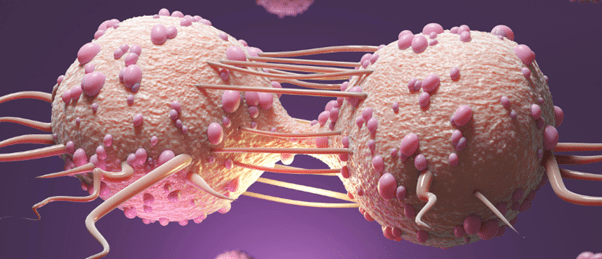Poking cancer right in its Achilles’ heel

Using CRISPR to create paired mutations in different genes, scientists came up with 152 mutation combinations that were detrimental to cancer cells. Find out how that might lead to new medications…
If one headlight in your car goes out, you’re OK. If both die, you’re in trouble. Similarly, researchers hope to weaken cancer cells that possess one mutation by inhibiting another gene.
Olaparib, approved for certain types of ovarian cancer in 2014, is the first such medication. The BRCA mutation in the cancer cells is that first headlight, which weakens DNA repair but doesn’t destroy it. The drug inhibits the PARP enzyme needed for proper DNA repair, and this second hit leaves the cancer in the dark, so to speak—while noncancerous cells with unmutated BRCA remain OK.
“You’re kind of using cancer’s own Achilles’ heel,” explained Trey Ideker of the University of California, San Diego. He and his colleagues designed a screen to identify other such synthetically lethal genetic interactions and reported 152 of them in Nature Methods .
The researchers selected 73 candidate genes—including oncogenes, tumor suppressors, and known drug targets—that they thought might weaken cancer when doubly mutated. They then employed CRISPR/Cas9 technology to introduce mutations in each of the 141,912 possible 2-gene combinations of the 73-gene set. The authors synthesized DNA constructs that encoded a pair of guide RNAs to target the Cas9 enzyme and delivered these to three cell lines: HeLa cervical cancer, A549 lung cancer, and 293T kidney cells.
Ideker and his colleagues provided the whole set of these DNA constructs to each cell line, at a concentration so that individual cells would only acquire and express one construct. They sequenced a portion of that cell pool to determine a baseline for the prominence of each guide RNA.
Then, they let natural selection take its course. The scientists sequenced the cells 2, 3, and 4 weeks later to create a growth curve for cells that were making each individual guide RNA. If the paired mutations were toxic, those cells and guide RNAs should drop out of the population.
Among all 3 cell types, the authors found 152 synthetic-lethal interactions. But the differences between the cell lines were striking: 38 interactions were unique to the HeLa cells, 43 to the A539 cells, and 55 to the 293T cells. “There was not much overlap,” said Ideker. “It did surprise us.”
The authors have more work to do to untangle what determines whether mutating a given gene pair creates lethality or not. It could be something that differs between tissue types, Ideker speculated, but it might also result from the cells’ unique genetic backgrounds. To apply this kind of therapeutic approach to patients, doctors would have to know which “second headlight” hit would work for a particular tissue type or genetic background.
Ideker considers the study a proof-of-concept and hopes to perform many more screens to create a database to guide treatment decisions.